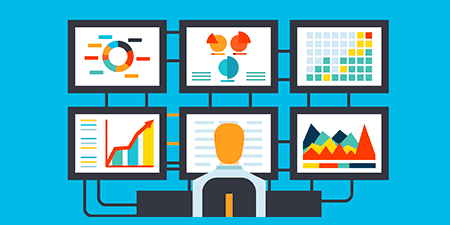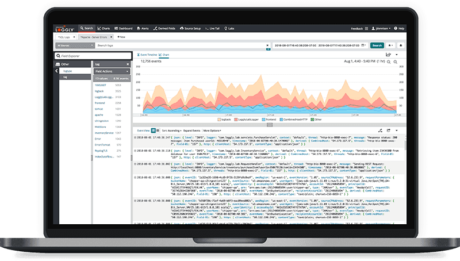Technical Resources
Educational Resources
APM Integrated Experience
Connect with Us
With log analysis, tech pros can inspect and utilize log data for diagnostic purposes. These simple guidelines can help you start gaining insights from your logs.
Applications, services, hosts, and more all generate large quantities of log data. Tech pros are responsible for understanding and using these logs, which requires effective and organized log analysis. As an ongoing practice, log analysis can help with troubleshooting, improving application performance, and avoiding service interruptions.
But log analysis can be challenging. If you manage many applications and services, for example, they likely generate enormous amounts of disintegrated log data, which can be difficult to parse. In these climates, tech pros often struggle to search for specific logs, slowing down root cause analysis and making it difficult to visualize text log files.
These issues are not insurmountable, though. Here are a few suggestions for how tech pros can adopt best practices for success in their log analyses.

Log analysis is the act of analyzing application-generated data logs. This data comes from applications, infrastructure components, and services, and it may include current and historical information. Some businesses may need to perform website log analysis or server log analysis if these are part of their overall IT environment. Tech pros analyze this data to keep applications and systems functioning as designed and to catch issues before they impact users.
It can be a challenge to unify and use the data coming from all these sources. The logs can be scattered all over the environment in a cloud-based application, or they can span multiple services and interconnected components. The first challenge is aggregating this log data into a single system. Once the logs are in one system, it’s easier to parse through large sets of data to extract insights. It’s common for this data to be sent using the syslog standard, and logging tools should typically be able to perform syslog analysis.
Analyzing logs can serve many purposes. It’s primarily used for timely diagnosis when troubleshooting applications, as techs can search log files and look at specific time frames to find a solution. Logging analysis software can help companies save time when they attempt to diagnose and resolve issues or manage their infrastructure and applications.
Application log analysis is the process of collecting and parsing log files generated from a company’s applications and programs. Application-generated logs can contain information like errors, noteworthy events, and warnings of potential bottlenecks.
Application log analysis can serve several purposes. Much like traditional log analysis, it’s important to analyze applications to extract insights and dedicate attention to possible issues. It can also help tech pros understand the behaviors of their users. These insights can help tech pros better understand how to meet the needs of their end users, whether they’re employees using internal programs or actual customers.
It can take time and energy for technicians to parse through all the logs generated from different applications. Although the data is typically structured, it comes in at a tremendously high volume. There’s simply no way to scan all these reports in a timely fashion. Application log analysis tools can centralize this data and use automation to sort through all the logs, saving manual hours and helping identify where issues might be occurring in an application.
Some businesses want to build their own logging systems to save money, but this can be more difficult than anticipated. A managed logging solution offers ready-made integrations and ongoing customer support, and it can be updated and improved when more advanced technology becomes available. Tech pros shouldn’t be wasting resources building unnecessary infrastructure to support logging analytics—they should focus on reaping the benefits of performing log analysis.
The next step in logging analysis is to make sure you have a strategy in place. Without a well-defined plan of attack, you might find yourself manually managing an ever-growing set of unimportant log data. Instead, decide which issues are the most important for your business and only work with logs capable of helping you solve them. To do this, it’s advisable to invest in data hosting locations and quality logging software.
In addition to developing a logging strategy, it’s important to consider data formats when performing log analysis. Since one of the goals of logging is to be able to manage copious amounts of data, tech pros need to be deliberate in their formatting. Without an effective standard, identifying and extracting useful information may become challenging.
Logs are most effective when they are stored in a centralized location. Centralizing logs can improve your analysis capabilities and allow you to run cross-analyses to identify correlations between different data sources. Aggregating log data also makes it easier to manage and allows you to establish more comprehensive archiving and disaster recovery policies.
Correlating data enables you to promptly identify and understand the events causing system malfunctions. This can help you discover a real-time correlation between occurrences such as resource usage and application errors, helping you identify anomalies and react before end users are affected.
If you’re going to get the most value out of your logging investments, you must have access to the real-time log data being sent off-premises. One way to achieve these insights is to invest in services with log tailing capabilities. Log tailing allows tech pros to monitor all the log data being sent off-premises in a consolidated form at any given time.
Although many tech pros may want to develop their own tools, it’s a mistake to try to handle complex log analysis without professional support. Tech pros need a trusted service to help streamline the many tasks associated with log analysis.
SolarWinds® Loggly® is a real-time log analysis tool capable of handling all your business needs. Loggly’s premier feature is Elastic Stack, a tool designed to automate data processing and offering users total autonomy over accessed permissions. This flexibility can add huge value for tech pros looking to offset some of the more tedious logging practices.

Loggly is an excellent log analysis software for tech pros looking to consistently monitor applications around the clock. Loggly has nine preconfigured dashboards displaying the performance of different network systems. Tech pros can use these dashboards to aggregate, monitor, and analyze events to improve their incident response time for critical applications. Loggly is an advisable purchase for any technical team. Learn more about Loggly on our product page today.